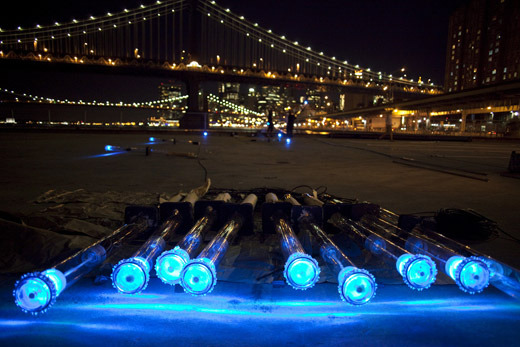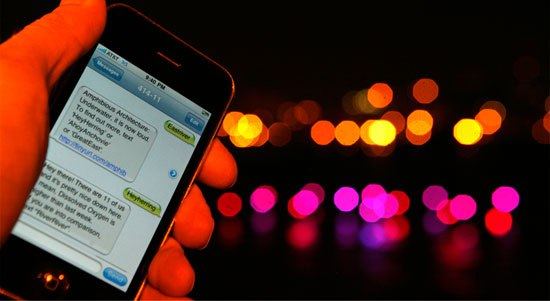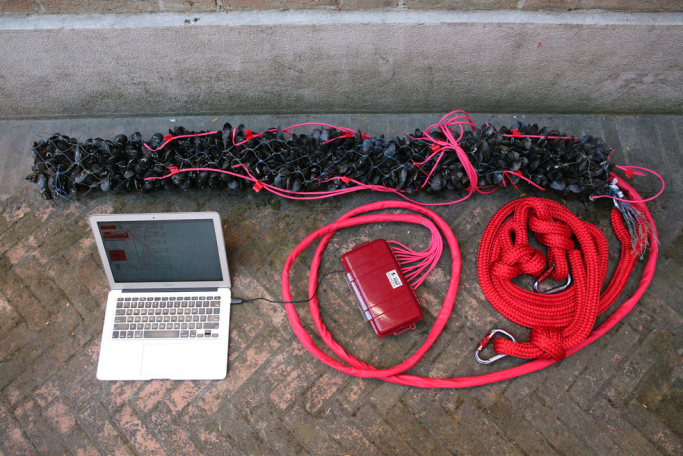In their recent book Responsive Landscapes, Bradley Cantrell and Jessie Holzman write about the ability of technologically-enhanced urban landscapes to “elucidate” natural processes that are invisible but present in cities. Technology built into urban form can become a medium for translation, allowing environmental information imperceptible by our own sensory apparatus to be rendered legible.
An excellent example of this approach is Amphibious Architecture, a network of underwater sensors in the East River connected to colored lights, created by The Living in collaboration with Chris Woebken, xClinic, and Natalie Jeremijenko. While originally a temporary installation, it is now slated to be installed permanently.
From the project description:
Though New York is surrounded by rivers, residents have little to no interaction with the water and little understanding of the ecosystem below. The Environmental Health Clinic at New York University and the Living Architecture Lab at Columbia University created Amphibious Architecture to allow a data-driven dialogue between humans, fish and their shared environment. Installed in the East River and the Bronx River, two networks of interactive tubes contain underwater sensors monitoring water quality, presence of fish, and human interest in the river ecosystem. The buoys light up when fish swim underneath and display the water quality with a shift in color. An SMS interface allows visitors to communicate with the fish, to receive real-time information about the river, and spark conversations by contributing to a display of collective interest in the river ecosystem.

Perhaps the most exciting thing about this dynamic installation is its interactivity; not only does it create a new language of lighting to expose water conditions and fish movement, it is also able to “talk with” and respond to park visitors. Visitors can send texts to the fish asking them about current underwater conditions and activity, and the lights blink when a text is received, giving users a direct part in the story. In the next iteration, The Living hopes to offer users the option to feed the fish with a special food that will help draw out heavy metals, directly translating the empathetic experience into pro-environmental action.

Even more ambitious is the project’s next planned phase: the introduction of biosensors in the form of live mussels. Mussels open their shells wider when water quality improves and cease filtration when it is too polluted, so a new set of sensors is being installed that will measure the river mussels’ gape and beam the information back to the lights in the river.

In this way, visitors are able to appreciate not just the environmental conditions of the river but the direct physiological response of the organisms living in these dynamic conditions.
The idea behind the project is brilliant, but an important question remains: how legible is this form of Ecoempathy to the average passerby, and how can the connection of the beautiful twinkling lights in the East River to the fish and mussels they are “speaking for” be made more obvious without being overt? This is where the on-shore experience of signage and visual cues and connections becomes most important. As The Living moves toward construction of the Mussel sensor project, this connection ought to be given particular consideration. Moreover, how can the visualization of poor water quality in the river help to translate into concrete, meaningful action?
Read More:
Perrin Drumm, “In the Studio with David Benjamin of Brooklyn Bio-Ar-
chitecture Firm, the Living,” https://thisismold.com/process/studio-visit/in-the-studio-with-david-benjamin-of-brooklyn-bio-architecture-firm-the-living.
http://www.thelivingnewyork.com/
http://chriswoebken.com/filter/the-living/amphibious-architecture
Advertisements Share this:




